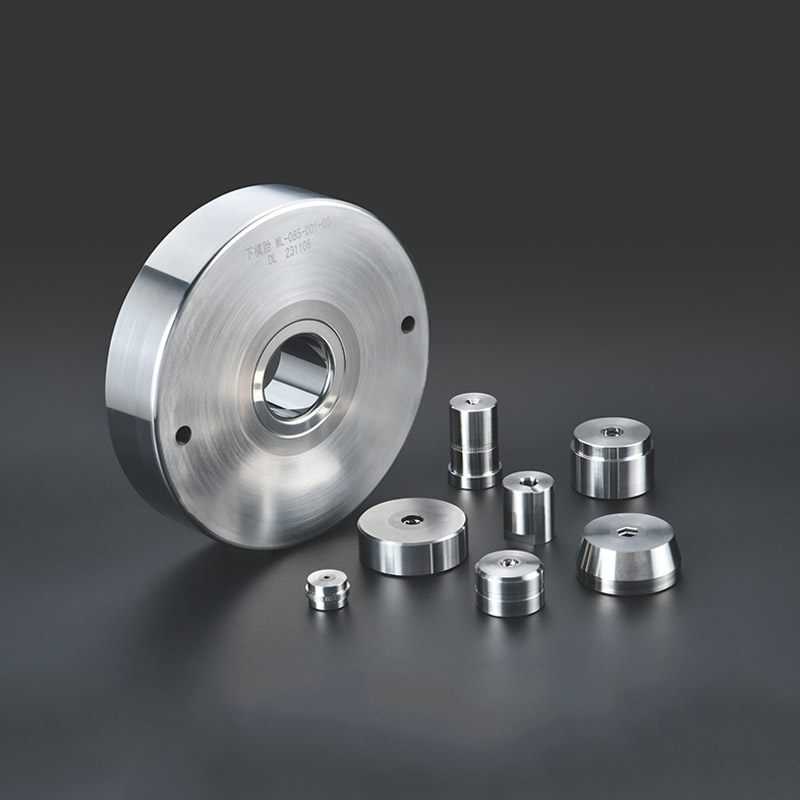In the fastener manufacturing industry, the quality and accuracy of screws depend not only on raw materials and equipment but largely on the performance of Heading Screw Molds. As the critical tooling used in cold heading processes, these molds determine the shape, strength, and consistency of screw heads, making them indispensable in high-speed production environments.

What is a Heading Screw Mold?
A Heading Screw Mold is a precision tool used in cold heading to form the head of screws and bolts by shaping metal wire rods under high pressure at room temperature. Through one or multiple strike stages, the mold creates a wide range of head styles with exceptional consistency and durability.
Common Screw Head Forms Produced
Hex Head
Phillips (Cross Recess)
Slotted Head
Torx / Anti-theft Profiles
Allen (Hex Socket)
Structure of a Heading Screw Mold
| Component | Function |
|---|---|
| Punch | Forms the head shape and recess (slot/cross) |
| Die | Controls external dimensions and contour |
| Sleeve | Provides structural support and stability |
| Carbide Insert | Enhances wear resistance and longevity |
Materials and Manufacturing Process
Heading molds are exposed to extreme stress and repeated impact during cold forging. Therefore, they require superior hardness, toughness, and precision.
Typical Materials Used
Tungsten Carbide – High hardness (HRA 88–92), excellent wear resistance
High-Speed Steel (HSS M2/M42) – Good impact resistance
Powder Metallurgy Steel (ASP23/ASP30) – Enhanced toughness & stability
Manufacturing Steps
CNC Turning and Milling
Vacuum Heat Treatment / Hardening
Wire-Cut EDM Finishing
Precision Grinding & Polishing
Surface Coating (TiN, TiCN, DLC)
Key Features of Heading Screw Molds
Ultra-High Precision – Tolerance up to ±0.002 mm
High Wear & Impact Resistance – Suitable for mass production cycles
Stable Output Consistency – Ensures defect-free screw heads
Compatible with Multiple Materials – Carbon steel, stainless steel, alloy steel, copper, aluminum, etc.
Applications in Fastener Manufacturing
Heading Screw Molds are widely used in producing:
Automotive Fasteners – Engine bolts, chassis screws
Electronic Screws – Mobile and laptop screws
Construction Fasteners – Drywall and expansion screws
Home Appliance Screws – Self-tapping and combination screws
Maintenance and Mold Life Optimization
| Maintenance Practice | Benefit |
|---|---|
| Regular cavity polishing | Avoid micro-cracks and burrs |
| Coating renewal (TiN/DLC) | Reduce friction and heat |
| Pressure & temperature monitoring | Prevent punch breakage |
| Protective sleeve replacement | Increase overall tool strength |
With proper maintenance, a high-quality heading mold can achieve 300,000 – 1,000,000 forming cycles.
How to Choose a Reliable Heading Screw Mold
| Evaluation Factor | Requirement |
|---|---|
| Material Quality | Carbide or powder steel |
| Dimensional Accuracy | ±0.002 ~ ±0.005 mm |
| Hardness | HRA ≥ 88 |
| Surface Finish | Ra ≤ 0.2 μm |
| Production Life | ≥ 300,000 hits |
Future Trends in Screw Mold Technology
As automation and precision manufacturing advance, Heading Screw Molds are evolving towards:
AI Wear Monitoring Systems
Modular & Replaceable Mold Inserts
Advanced PVD/DLC Coatings for Anti-Sticking
Multi-Station Progressive Forming Design
A Heading Screw Mold is far more than a steel tool—
It is the heart of precision screw manufacturing, ensuring performance, durability, and efficiency in every production line.
Investing in high-quality screw molds means:
Fewer defects
Higher production efficiency
Lower total cost
If you require custom-designed Heading Screw Molds with extended service life and precision engineering, partnering with a professional mold manufacturer is the key to long-term production success.











